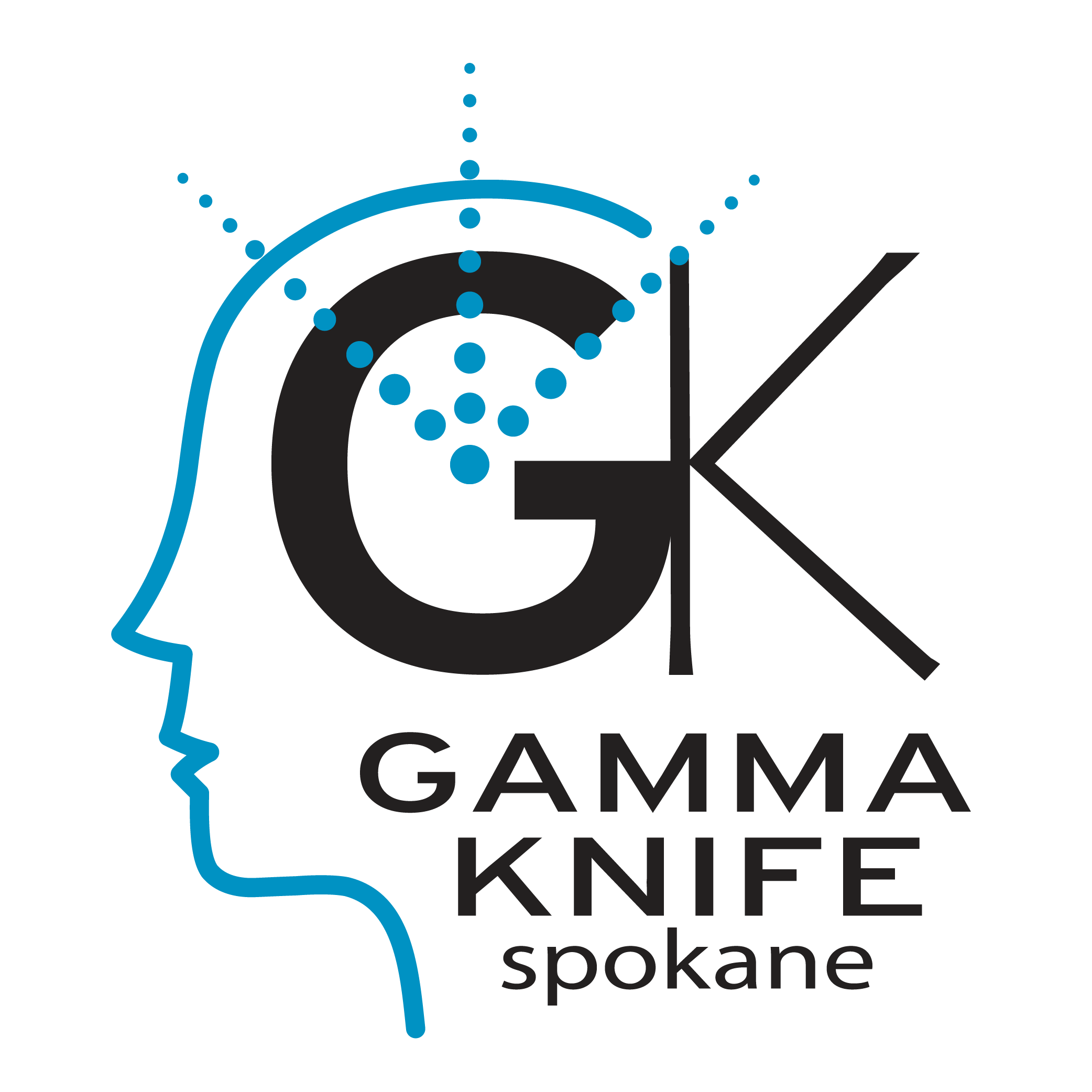FREQUENTLY ASKED QUESTIONS
We have an open door policy for patients' families. They are welcome in the preparation rooms and to accompany patients into the Gamma Knife area until we begin treatment. The same goes for answering any and all questions that may arise along the way.
ABOUT GAMMA KNIFE
How is the Gamma Knife different from radiation therapy?
The Gamma Knife is more accurate and takes less time to deliver than traditional radiation therapy.
Gamma Knife surgery is different from conventional radiation therapy of the brain because the radiation is precisely directed at the target and spares the surrounding normal brain tissue and other structures. Because of this, the radiation dose can be delivered to just the targeted tumor in one session. It is an 'overwhelming' dose that destroys the tumor.
Gamma Knife radiosurgery can be used in conjunction with whole brain radiation therapy with excellent results. In addition, it can also be used with conventional surgery as a treatment for tumors that cannot be totally removed or, in some cases, where the tumor is inoperable.
Do you use LINAC radiosurgery along with Gamma Knife?
Gamma Knife radiosurgery (single dose treatment) is different than traditional Linear Accelerator (LINAC) based radiation in that it is a single dose - one time, one day, and you're done, versus multiple treatments (fractionated). Because the Gamma Knife has 201 sources of radiation, healthy tissue gets only 1/200th of the dose delivered to the target. For that reason, the Gamma Knife can be used in a single-dose delivery, eliminating the need to fractionate (break up the total dose into smaller doses in order to preserve healthy brain tissue).
Because the Gamma Knife has a fixed isocenter and fixates the skull for delivery, its accuracy (and resulting minimal dosing to healthy tissue) is superior to that of the LINAC.
In addition, LINACs, used for stereotactic radiosurgery, usually take longer to treat than does the Gamma Knife (especially for multiple tumors). Bottom line? You wait less time with the Gamma Knife.
We have extensive experience with both technologies and we no longer use the LINAC for intracranial radiosurgery.
How is this different from the CyberKnife?
The Gamma Knife has been in operation for over 40 years and has been used to treat hundreds of thousands of patients. It is considered the 'gold standard' for intracranial tumor control. Because the Gamma Knife secures the skull with a lightweight frame and the radiation source is fixed (unmoving), its accuracy is within .3mm. The CyberKnife doesn't fix the patient's head and has moving delivery systems that do not offer the same level of accuracy as the Gamma Knife. This accuracy is significant when it comes to sparing healthy brain tissue during these very delicate procedures.
Also, the CyberKnife delivers between 2 to 6 times greater radiation dose to healthy tissue than does the Gamma Knife. This is significant in that it is healthy brain tissue that makes you, you. You want to keep that tissue safe.
I know I can't get whole brain radiation more than once. Can I get multiple Gamma Knife treatments?
Yes. In some cases, patients who have been treated and develop new tumors can come in for additional procedures. Because of the accuracy of the Gamma Knife, healthy tissue is not as compromised as it would be with conventional radiation therapy. In the case of trigeminal neuralgia, excellent results have been seen when the patient has follow-up procedures.

